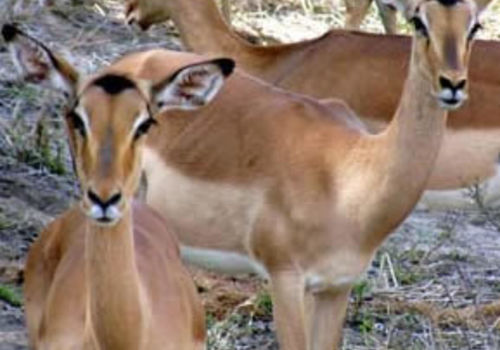
Impala
Aepyceros melampusImpala
Introduction: Impala (Aepyceros melampus) favour woodlands, sheltering an undergrowth of grass or shrubs. They are seldom far away from water, hence their Namibian distribution patterns. They are very common in their range and a characteristic of impala is the attendance of red-billed oxpeckers busily cleaning and generally keeping impala free from ectoparasites, although they do self-groom with their lower incisors to remove ticks.
Distribution: Far eastern Zambezi Region (formerly the Caprivi Strip) and wetlands & Okavango Delta.
Diet: Leaves of woody plants and grasses. In summer they eat grass but move on to shrubs and bushes later in the season. Edible fruits and acacia pods.
Colouring: A reddish-brown coat with white underparts, decorated with a distinctive black band that extends from the rump down the back of the thigh. Tufts of black hair on the lower hindleg cover scent glands.
Breeding: Females give birth to a single juvenile. Gestation periods are around 194-200 days.
Size: Medium sized males and females are around 0.9m at the shoulder. Males only have horns up to 0.7m long.
Weight: 40kg


.png?width=82&height=85&name=Navigate%20Namibia-03%20(1).png)